by Ken Lain, the mountain gardener
Mountain monsoon season is the start of perennial blooms in the high country. Not only do most perennial flowers take off with new buds and blooms, but they are magnets to unrelenting voracious insects.
Bugs wreak havoc on flowers leaving frustrated gardeners to ponder whether to fight back with chemical pesticides, organic poultices, or angry machete chops. However, even if you’ve lost the battle with bugs this season, you can win the war by planting flowers that insects find unpalatable. These flowers naturally repel insects due to soapy sap, succulent leaves, hairy foliage, and other natural defenses, meaning you have more time to devote to weeding, bouquet gathering, or just relaxing in the garden.
Lavender – If you have an area of full sun and well-drained soil, you have the opportunity to grow lavender, one of the most beloved perfume-yielding plants. The foliage and the flowers are filled with lavender fragrance ripe for potpourri, bouquets, and for use in the kitchen.
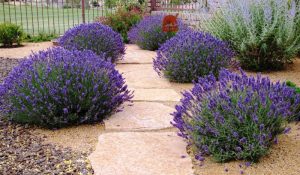
Catmint – Whether or not you like cats, if pests are a problem, you should include the 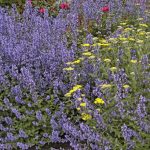 famed Nepeta ‘Walker’s Low’ in your perennial garden. Not only does this blue-blooming hummingbird magnet deflect insects, but rabbits and deer will pass it by as well. Try a pretty carpet of several plants as a companion planting in a rose garden.
famed Nepeta ‘Walker’s Low’ in your perennial garden. Not only does this blue-blooming hummingbird magnet deflect insects, but rabbits and deer will pass it by as well. Try a pretty carpet of several plants as a companion planting in a rose garden.
Bloody Cranesbill – Not to be confused with annual geraniums, this wilder cousin of traditional geraniums is a good pest-repelling option. Plant in average soil in partial shade, and enjoy the summer-long flowers and fragrant foliage of this perennial bloomer.
Daylily- With so many perennial colors to choose from, local gardeners collect daylilies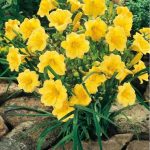 like they acquire roses. No matter the color, or fragrance, bugs have a disdain for the taste. Every garden deserves at least one daylily, because it is suited to xeriscapes, is both bug and animal proof, and grows even better than ornamental grasses in local gardens.
like they acquire roses. No matter the color, or fragrance, bugs have a disdain for the taste. Every garden deserves at least one daylily, because it is suited to xeriscapes, is both bug and animal proof, and grows even better than ornamental grasses in local gardens.
Russian Sage – This is an indispensable plant for the hot sunny border because it attracts beneficial bees but offers nothing to browsing bug pests. Even javelina find this bloomer distasteful. This is due in part to a combination of a bracing herbal aroma, and tough, fuzzy foliage. Gardeners will appreciate the waving blue wands of foliage from early summer until fall on plants that need no deadheading and, once established, require no additional irrigation. To keep Russian sage in check pull up young runners in the spring.
Butter Daisy – It’s a wonder that the cheerful annual Melampodium divaricatum hasn’t earned a rightful place alongside marigolds and zinnias as a local favorite. This flower is easy to start from seed, and plants stay smothered in one-inch yellow blossoms all season. No need to save seed for the next summer’s blooms, as these plants self-seed easily. All the bright green plants ask is a location in full sun and regular watering.
Dianthus – It seems that insects abhor the spicy clove scent of cottage pinks as much as 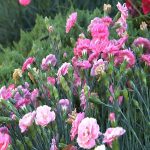 we love it. Dianthus was born to thrive in rock gardens, as sharp drainage is an essential habitat for the success of this spring-flowering plant.
we love it. Dianthus was born to thrive in rock gardens, as sharp drainage is an essential habitat for the success of this spring-flowering plant.
African Lily- Also known as lily of the Nile, its thick, strappy foliage shrugs off insects with ease. A true zone 8 perennial, this blue-flowering plant performs best in the warmer parts of the garden.
Meadow Sage – The earthy sage fragrance of this spring bloomer seems to please everybody’s sense of smell. Dark blue flowers cover its foot-tall stalks. A local wildflower, it is so easy to grow that it naturally spreads to form a meadow look without any care. Cut back the spent flowers and you can cause them to re-bloom in summer. One of my favorites.
Rosemary – Although gardeners find this evergreen herb delightful, it has the opposite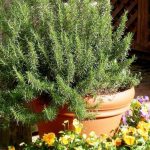 effect on destructive bugs. Rosemary comes in two forms, a ground cover type and the hip-high upright variety. Both are used in the kitchen, both repel insects from the garden, and both are equally animal proof. A dependable perennial that should be in every garden.
effect on destructive bugs. Rosemary comes in two forms, a ground cover type and the hip-high upright variety. Both are used in the kitchen, both repel insects from the garden, and both are equally animal proof. A dependable perennial that should be in every garden.
Facebook ‘Go Live’ – Can’t make a class? We stream these garden classes live through the Watters Garden Center Facebook page. Like our page and watch at your convenience.
Until next week, I’ll see you here at Watters Garden Center.
Ken Lain can be found throughout the week at Watters Garden Center, 1815 W. Iron Springs Rd in Prescott, or contacted through his web site at WattersGardenCenter.com or FB.com/WattersGardenCenter .

